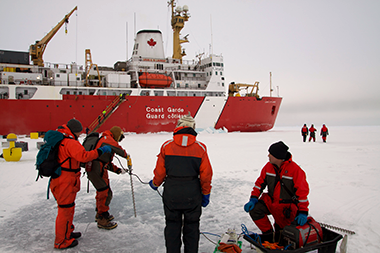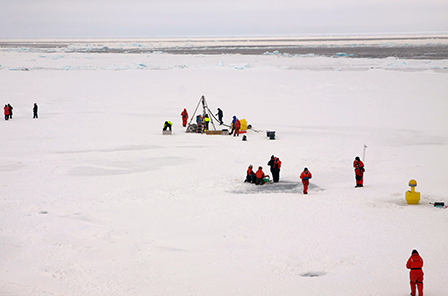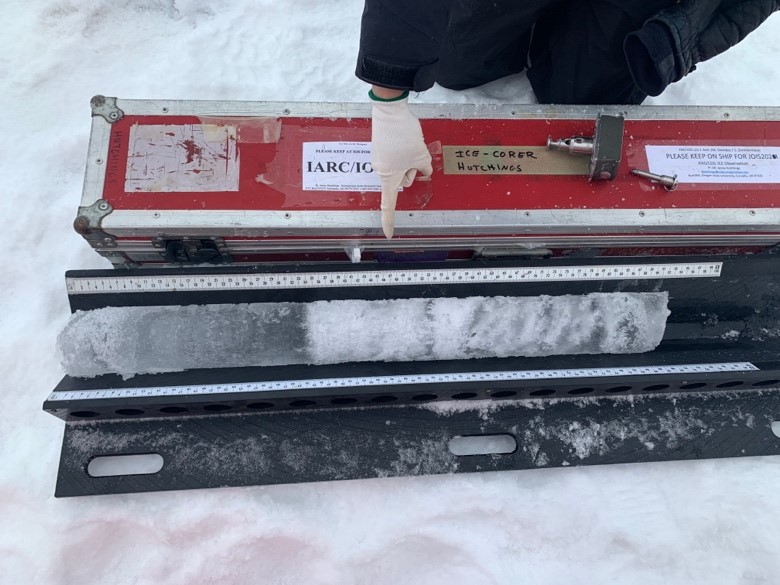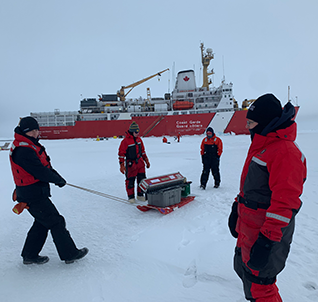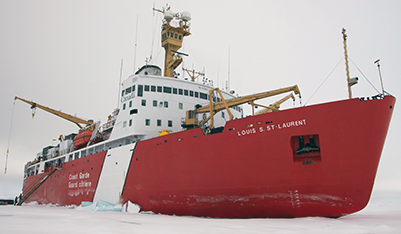Dispatch 11: Sampling on the Ice!
Ashley Arroyo
September 26, 2022
Today we have reached another ice station, which means that most of the science team will be on the sea ice helping with various projects. In addition to the deployments of an Ice-Tethered Profiler (ITP), a Top-Ocean Profiler (TOP), ice-mass balance buoy, and an Arctic Ocean Flux buoy, there are several other projects in motion that involve sampling on the sea ice itself! One of the teams on the ice was responsible for taking ice-core samples, which are cylindrical sections of ice that are drilled from the surface to the bottom of the ice/ocean interface. The length of the cores is equal to the thickness of the sea ice that is drilled into to retrieve them, which is usually about 1-2 meters at our stations.
To take the ice cores, the team first needs to shovel the snow off a small area to make sure they are drilling directly into the ice. Then, we start up the engine, and the hollow cylindrical drill cuts through the ice, pulling out the ice core which is then transferred to a wooden measuring board (Photo 2). When the samples are analyzed later, they are done so in 10-centimeter intervals of the core. As soon as it is removed from its ice floe, the core temperatures for each segment are taken by drilling small holes at the midpoints of each 10-centimeter interval of the core and measuring the temperatures. After the ice temperatures are recorded, it is time to chop up the ice core into 10-centimeter-long chunks! To do this, we measure the intervals, and use a saw to cut up the ice core. Once the samples are cut, their lengths are measured and recorded. Finally, the segments of the ice core are transferred to pre-labelled individual plastic bags to be further analyzed. Then, the team moves on to repeat the process and take another core. In a day’s work, we can take about 6 cores.
In addition to the team taking the ice-core samples, there were also people measuring ice and snow thicknesses, taking under-ice water samples in Niskin bottles to analyze onboard, and recording under-ice measurements of different water properties. Some members of the science team even brought around snacks, tea, and coffee from the ship to the people who were sampling and deploying ice buoys! We arrived at the next ice station this morning, and the science team is excited to have another day to continue sampling and deploying instruments on the ice!
